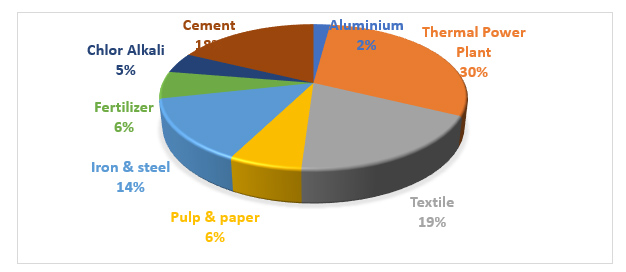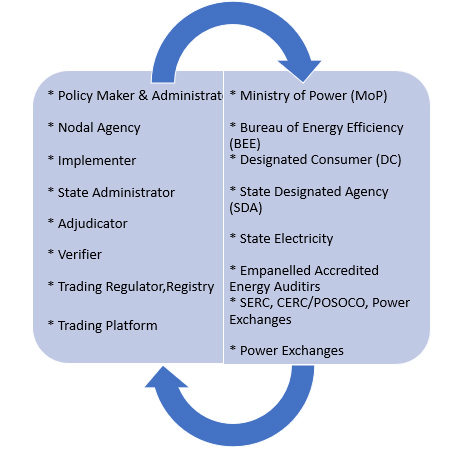National Mission for Enhanced Energy Efficiency (NMEEE) is one of the eight national missions under the National Action Plan on Climate Change (NAPCC) launched by the Government of India in the year 2008. NMEEE’s main objective is to promote innovative policy, regulatory and financial mechanism as well as business models that promote market for energy efficiency in a time bound manner.

Perform, Achieve & Trade
Perform, Achieve & Trade (PAT) scheme is the flagship scheme of NMEEE with the primary objective of helping DCs (Designated Consumers) to achieve their legal obligation accountability under the Energy Conservation Act, 2001, and provides them with necessary market-based incentives to over-achieve the targets set for them.
Designated Consumers
As per the provision of the clause (e) and (f) of section (14) of the Energy Conservation (EC) Act 2001, the Central Government notified the criteria for Designated Consumers vide S.O no. 394(E) dated 12th March, 2007 under which industrial units from 9 energy intensive sectors (Aluminum, Cement, Chlor-Alkali, Fertilizer, Iron & Steel, Paper & Pulp, Railways, Thermal Power and Textile) have been notified as Designated Consumers.
PAT Scheme
Perform, Achieve & Trade (PAT) mechanism, launched by Bureau of Energy Efficiency (BEE) under Ministry of Power on 4th July 2012 at New Delhi.
PAT is one of the most innovative and unique market-based mechanism in the world to step up and incentivize energy efficiency in 15 large energy-intensive industries.
However, India’s 45 % primary energy consumption which accounts for 25 % of GDP, fall under 8 major energy intensive sectors i.e., Aluminum, Thermal power plants, Textile, Pulp & paper, Irons & steel, Fertilizer, Chlor Alkali and Cement.

The PAT scheme intention is to ensure energy savings that will not only benefit the industries but also would contribute to an extent to ensuring energy security of the country and thus easing the pressure on energy infrastructure
Stakes Holders of PAT

PAT Cycle
PAT scheme is operating on rolling basis i.e., new DCs from existing or new sectors are include in PAT, on an annual basis
